
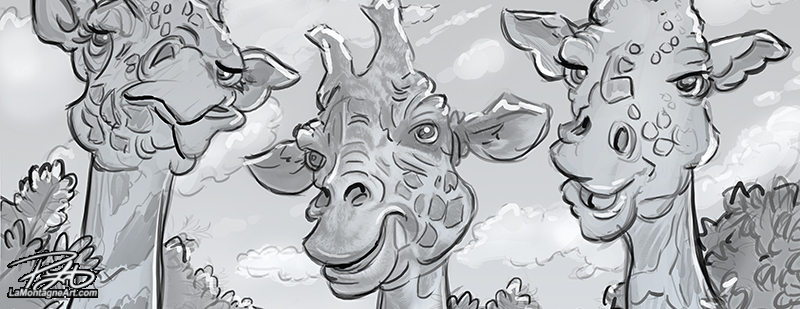 In 2008, I hosted the Canadian Editorial Cartoonists Conference in Banff. Several industry veterans who attended came up in a culture where busy unionized daily newspapers hired editorial cartoonists for impressive salaries, benefits, and pensions. I began my career at the end of all that.
In 2008, I hosted the Canadian Editorial Cartoonists Conference in Banff. Several industry veterans who attended came up in a culture where busy unionized daily newspapers hired editorial cartoonists for impressive salaries, benefits, and pensions. I began my career at the end of all that.
I put a lot of work into the conference and preparing a Photoshop drawing class, trying to impress and curry favour with the more established cartoonists in this exclusive club. But, unfortunately, I realized too late that nobody cared. They were simply looking for an excuse to visit Banff, hang out and talk shop. It was about nostalgia, politics, and competitors fishing for information.
I wanted to improve my skills and artwork and learn how to adapt to a struggling industry, but many of them were focused on avoiding having to change. In fact, in the wrap-up, one of the more senior cartoonists loudly promised there wouldn’t be any Photoshop drawing classes at the next conference.
Clearly, I didn’t belong in this group.
In 2009, I attended another conference, the National Association of Photoshop Professionals in Las Vegas. I had been a member of this supportive online community for several years. Critiques were constructive, questions were answered with enthusiasm, and I learned more from that association than any before or since.
Fresh off that first Photoshop World conference, inspired to try something new, I painted a funny looking grizzly bear, my first whimsical wildlife portrait.
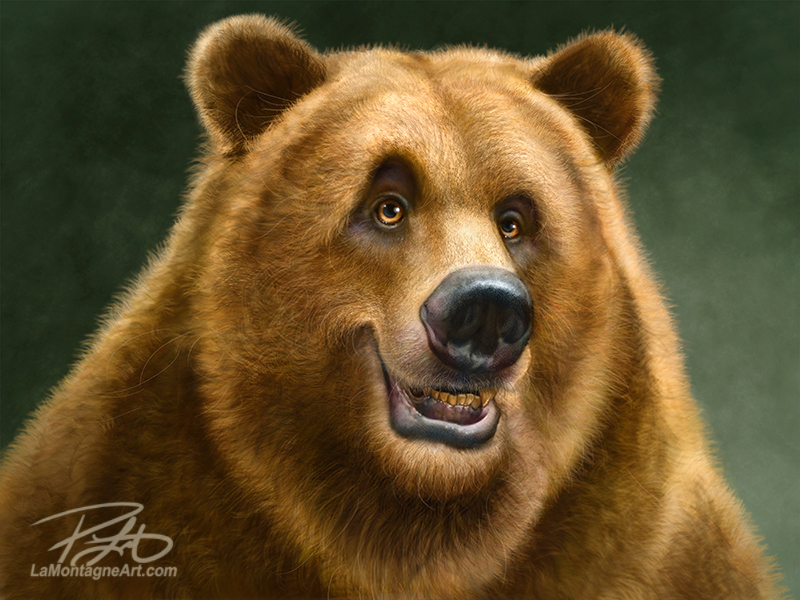 I went to that conference five times between 2009 and 2014. In 2010 and 2014, I won multiple Guru Awards for my animal paintings, including two Best in Show awards. The classes and instructors, the community of friends and colleagues, it was time and money well spent.
I went to that conference five times between 2009 and 2014. In 2010 and 2014, I won multiple Guru Awards for my animal paintings, including two Best in Show awards. The classes and instructors, the community of friends and colleagues, it was time and money well spent.
At Photoshop World, I made valuable business connections. For a long time after, I had a welcome working relationship with Wacom, the company that makes the drawing tablets and displays I’ve used for the past 25 years. I recorded two training DVDs for PhotoshopCAFE, and NAPP helped me form a strong foundation for my creative skills.
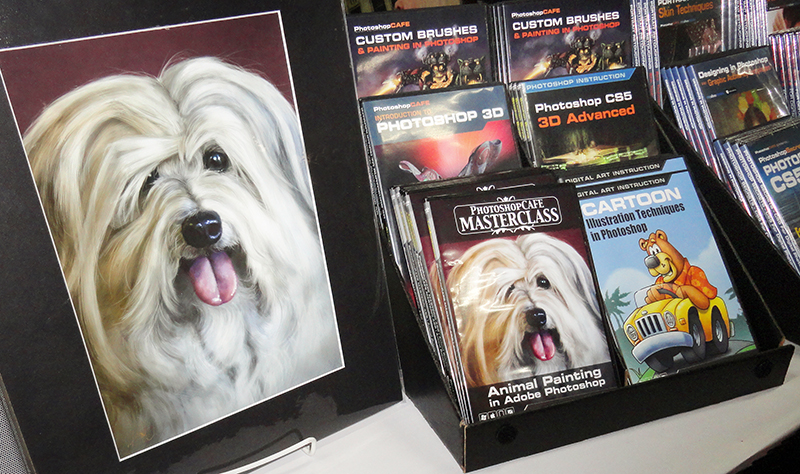 Eventually, social media killed the forum, and the organization rebranded. As a result, NAPP no longer exists, and the Photoshop World conference is a ghost of its former self.
Eventually, social media killed the forum, and the organization rebranded. As a result, NAPP no longer exists, and the Photoshop World conference is a ghost of its former self.
Time spent pining for the way things used to be is a waste. Adaptation is the most useful skill a self-employed artist can have.
While licensing and retailers are essential for my business, those customers each have their own ideas of what they want from my work. One retailer wants more bears; another wants more wolves. One agency wants me to follow seasonal trends; another client wants more realistic animals. Some products sell better with brighter, more colourful elements, and some without a background. Some items work better with a vertical layout, others horizontal.
Most artists have heard they should find their niche, the work that makes them unique and different from everybody else. It’s the key to survival in a crowd where a lot of art looks the same. But if you work hard and are lucky enough to discover the work that defines you, the next piece of advice you hear is that you need to make it appeal to everyone all the time.
Well, which is it?
How do you create work you enjoy enough to keep doing it year after year and continue to make it pay? How do you serve your customers and clients and allow their input and direction without changing your work so much that it’s no longer yours? Is it artwork or factory work?
When it becomes a grind or just about pumping out more images, it can take all the joy out of it. Lately, finishing some paintings has brought the same sense of accomplishment I get from cleaning the house. That’s a telltale sign of burnout. I’ve been here before, more than once. It’s a common experience with anyone who creates anything, especially if it’s their job, a warning that something’s got to give.
I know how to paint a single animal. I’ve put almost fifteen years into it. Each takes hours to paint, and the work I’m doing now is better than I’ve ever done, but it’s still the same style and (shudder) formula. It’s not as challenging or fulfilling as it used to be.
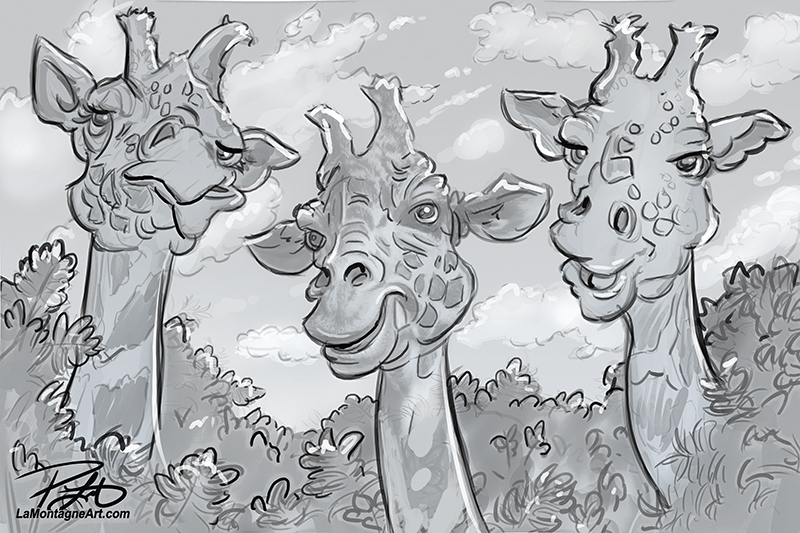 I’ve taken a new approach with the trio of giraffes, already titled “Long Neck Buds.” I don’t know if it will work the way I imagine it, but if it does, it will be the first of several I plan to paint this way.
I’ve taken a new approach with the trio of giraffes, already titled “Long Neck Buds.” I don’t know if it will work the way I imagine it, but if it does, it will be the first of several I plan to paint this way.
This latest individual giraffe isn’t quite a finished piece, but it’s close. It will also be the middle giraffe in the painting based on the group sketch above. With the simple background, it’s a solid painting on its own. I’ll paint the other two individually, like this first one, with my usual high detail, then I’ll place them all together. Finally, I’ll paint the sky, clouds and leaves around them.
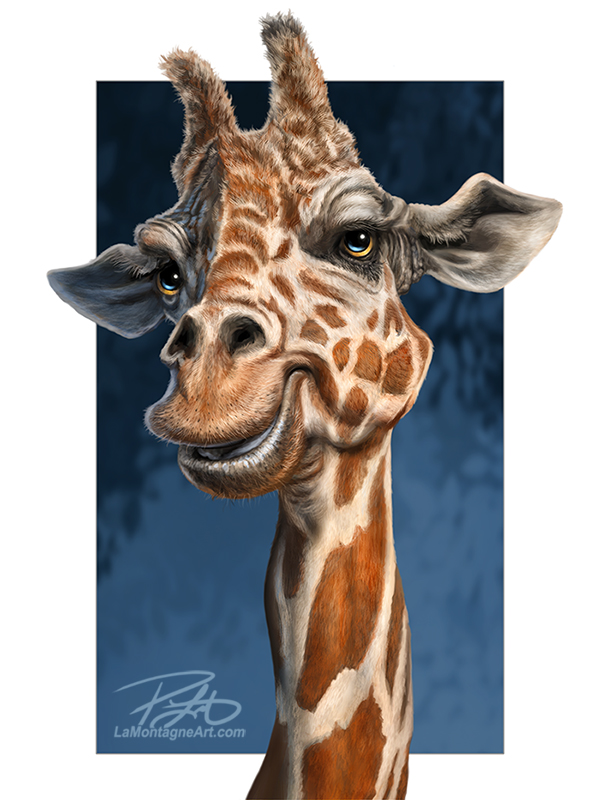 I’m a commercial artist, it’s how I make my living. I don’t pretend otherwise. But this is also supposed to be fun. I want to paint more detailed and elaborate images I’ll enjoy while also leaving options open for clients and licenses with different needs.
I’m a commercial artist, it’s how I make my living. I don’t pretend otherwise. But this is also supposed to be fun. I want to paint more detailed and elaborate images I’ll enjoy while also leaving options open for clients and licenses with different needs.
I want to create more paintings this way—a troop of meerkats, several burrowing owls, and a waddle of penguins. I could paint different species in an image. However, with each critter as detailed as my usual work, these will take longer than a single painting, requiring a more substantial investment in each piece.
I get nervous when spending too much time on one painting, likely due to many years of drawing editorial cartoons. Twenty years ago, when almost nobody was publishing my work, I would spend many hours nitpicking a cartoon, trying to get a caricature right or fussing with perspective. Shonna and I referred to these as Sistine Chapel cartoons. I had to train myself to say, “good enough.”
Most political cartoons have a short shelf life, so speed is essential. Get it done, get it out, and get started on the next one. My cartoon work pays monthly bills.
With a painting, however, the income can come anywhere from next week to next year. Pieces I painted ten years ago are still paying today. Paintings are an investment in future prints, products and licensing, income that often comes later.
This year, I’m making time to play and experiment.
I’ll share works in progress, sketches, and thoughts along the way, but fewer finished pieces. The ones I do complete will be bigger and hopefully worth waiting for. Of course, I expect I’ll still paint a single animal here and there if the mood strikes me.
11” X14” poster prints will come out only a couple of times a year rather than as I complete them. With higher shipping costs, I imagine that it won’t be a problem for collectors of my work to be able to order two or three new pieces at a time with one shipping cost.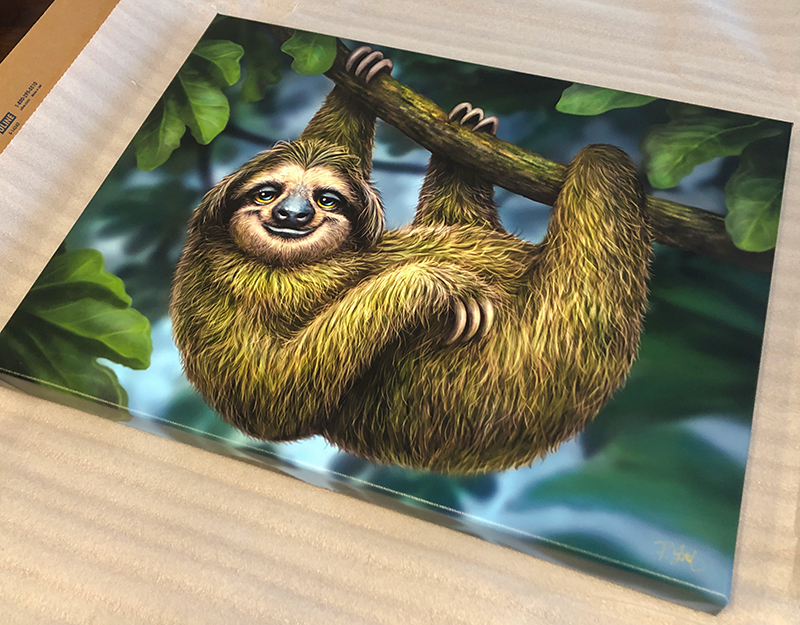 But I’ll still welcome custom metal and canvas special order prints. You can order those by email anytime. The above 18”x24” sloth on canvas and 20″x20” Blue Beak Raven on metal below are two custom orders that arrived this week.
But I’ll still welcome custom metal and canvas special order prints. You can order those by email anytime. The above 18”x24” sloth on canvas and 20″x20” Blue Beak Raven on metal below are two custom orders that arrived this week.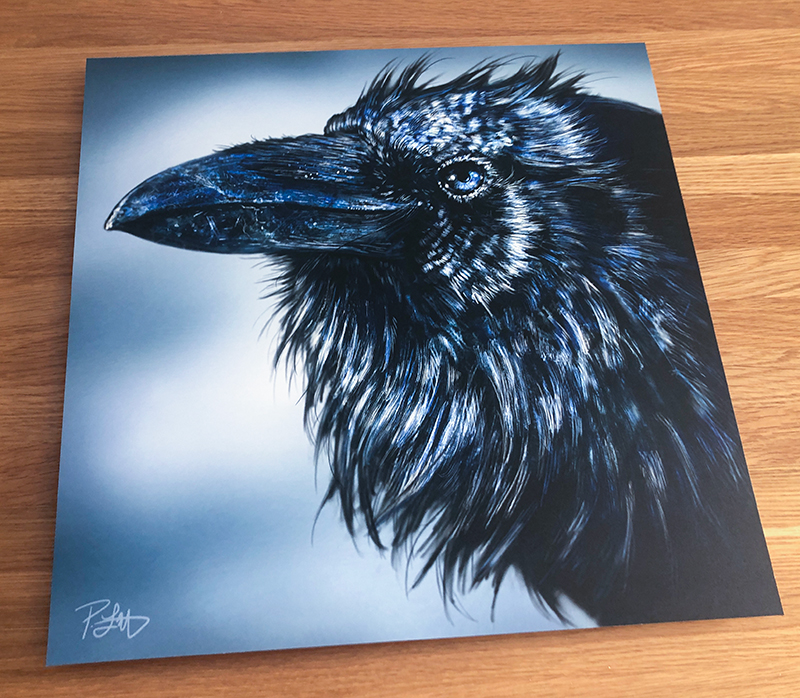 The puzzles I launched this year felt like a considerable risk, but I sold a lot of them and have received requests for more. I’m suddenly motivated to plan paintings that will work as prints, puzzles, stickers and more. I’m also exploring puzzle licensing opportunities.
The puzzles I launched this year felt like a considerable risk, but I sold a lot of them and have received requests for more. I’m suddenly motivated to plan paintings that will work as prints, puzzles, stickers and more. I’m also exploring puzzle licensing opportunities.
In the meantime, my collection of more than 100 paintings will continue to pay the bills with prints and licensing, as will drawing daily editorial cartoons, for as long as newspapers hang on.
I’m not having any fun. That needs to change.



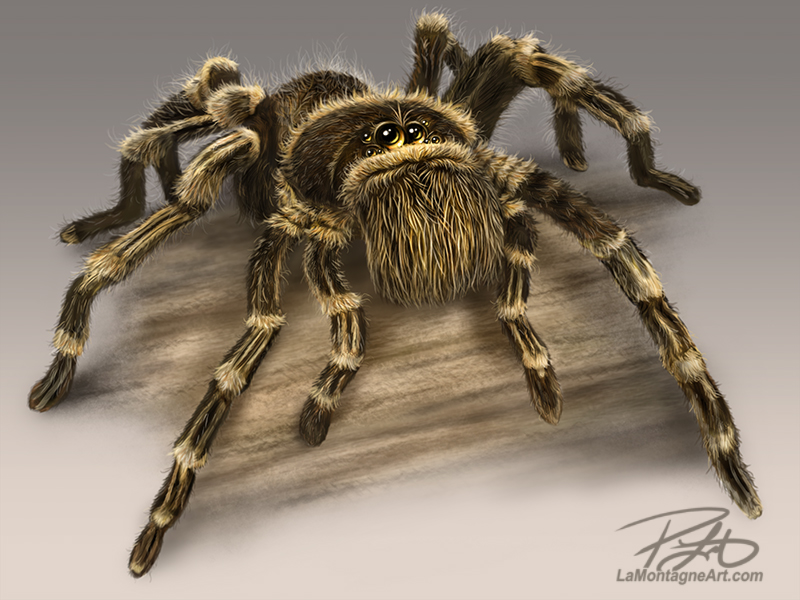 One evening when Shonna and I were first dating, we watched the fun comedy horror movie Arachnophobia with her mom and stepfather. The movie over, I sat in front of the TV to rewind and remove the rented VHS tape. Yes, it was a long, long time ago.
One evening when Shonna and I were first dating, we watched the fun comedy horror movie Arachnophobia with her mom and stepfather. The movie over, I sat in front of the TV to rewind and remove the rented VHS tape. Yes, it was a long, long time ago.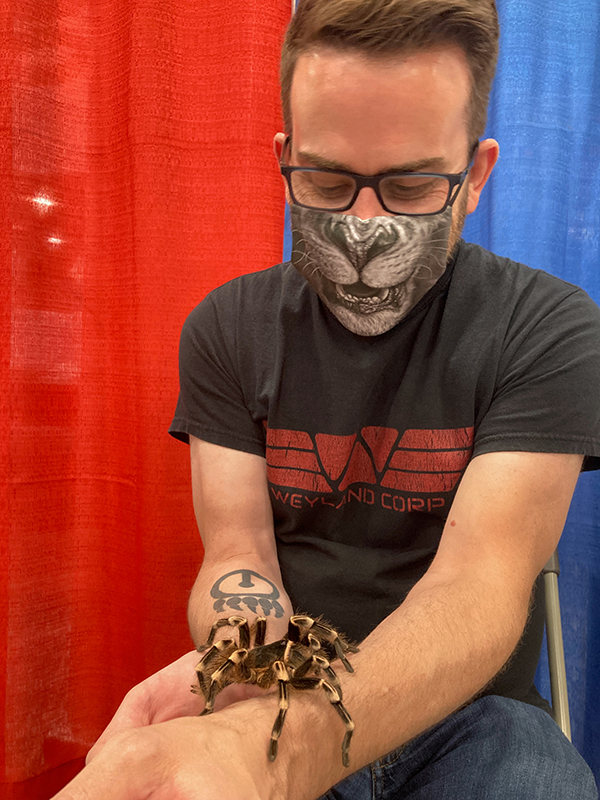 Derek took some photos for me, and I’ve wanted to paint this tarantula ever since, though I doubt it will be a popular print. I just wanted to try it.
Derek took some photos for me, and I’ve wanted to paint this tarantula ever since, though I doubt it will be a popular print. I just wanted to try it.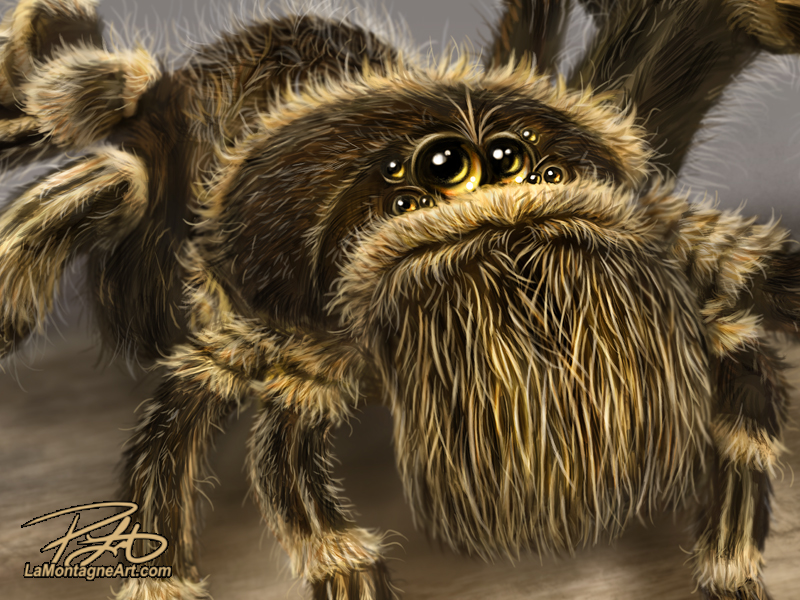 And yet, the natural features below his eyes suggested a moustache and maybe the illusion of a mouth. Humans are geared to see patterns. It’s called
And yet, the natural features below his eyes suggested a moustache and maybe the illusion of a mouth. Humans are geared to see patterns. It’s called 
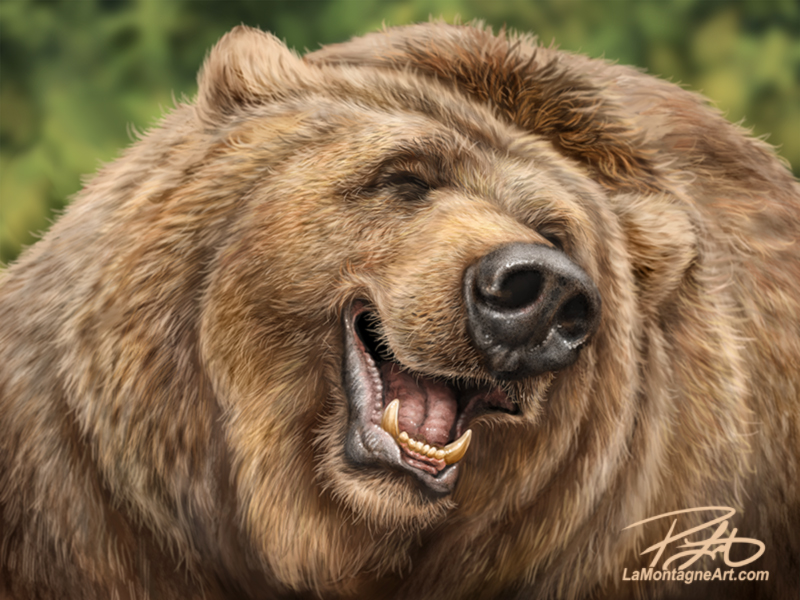 I’ve lost track of how many animals I’ve painted since that first grizzly bear in 2009, but I know it’s more than a hundred.
I’ve lost track of how many animals I’ve painted since that first grizzly bear in 2009, but I know it’s more than a hundred.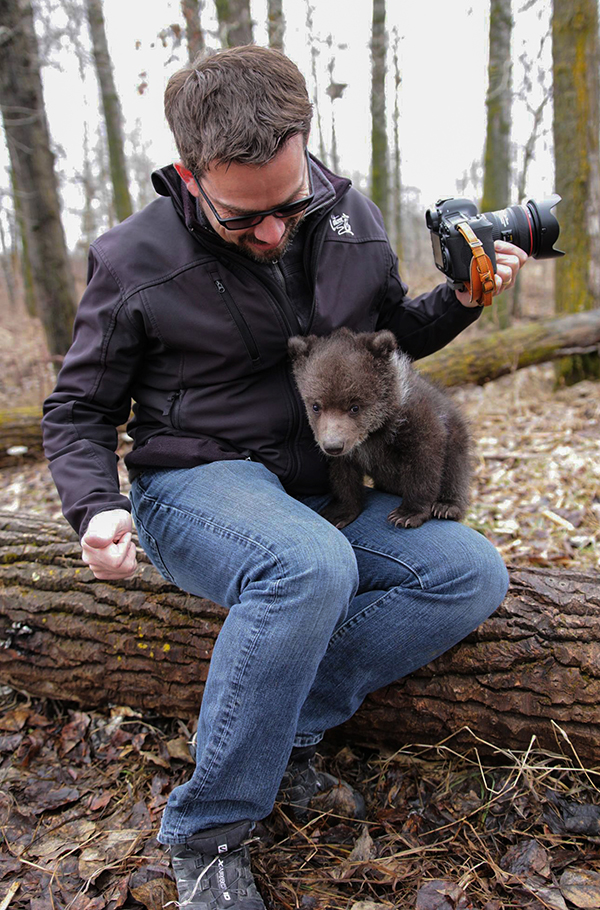 If you’ve followed my work for longer than five minutes, you’ll know all about her. An orphan rescued from the US in 2017 by my friend Serena at Discovery Wildlife Park in Innisfail, I’ve known Berkley since she was a few months old and have been painting her ever since. Here’s the first one.
If you’ve followed my work for longer than five minutes, you’ll know all about her. An orphan rescued from the US in 2017 by my friend Serena at Discovery Wildlife Park in Innisfail, I’ve known Berkley since she was a few months old and have been painting her ever since. Here’s the first one.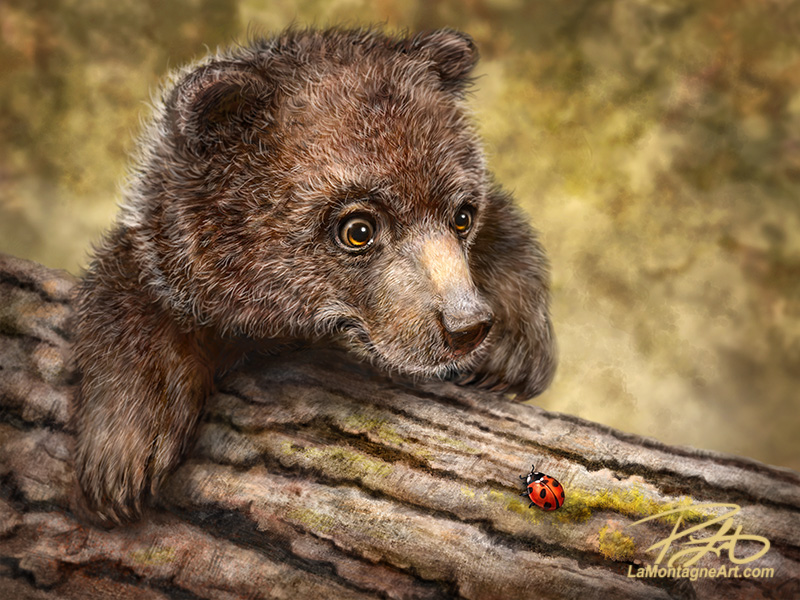
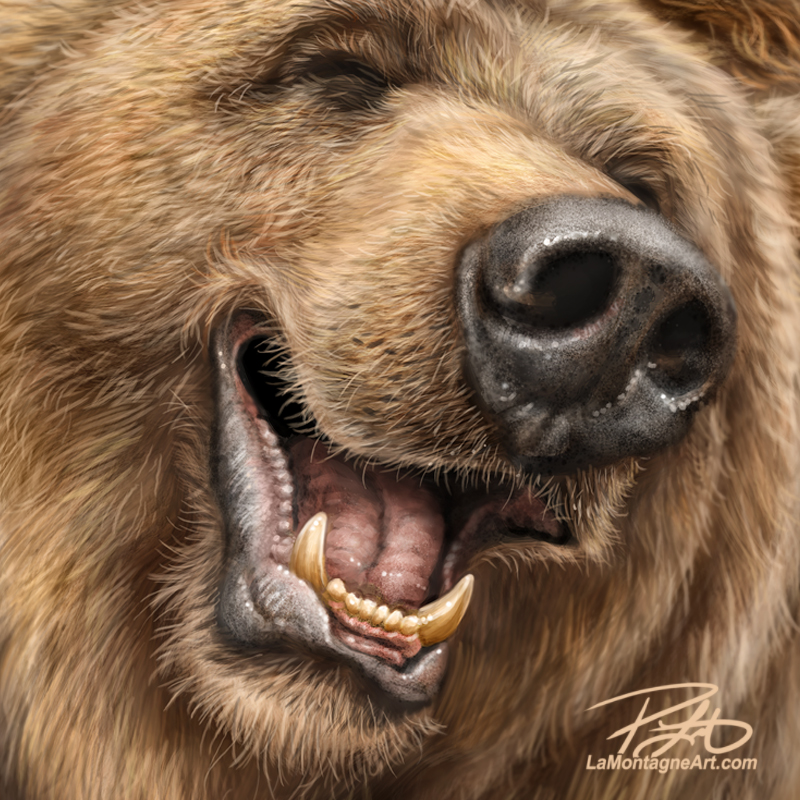 Serena regularly sends Shonna and I texts and photos of the animals, and we visit Discovery Wildlife Park as often as possible. Not so much the past few years, for obvious reasons, but I intend to change that once the warmer weather arrives.
Serena regularly sends Shonna and I texts and photos of the animals, and we visit Discovery Wildlife Park as often as possible. Not so much the past few years, for obvious reasons, but I intend to change that once the warmer weather arrives.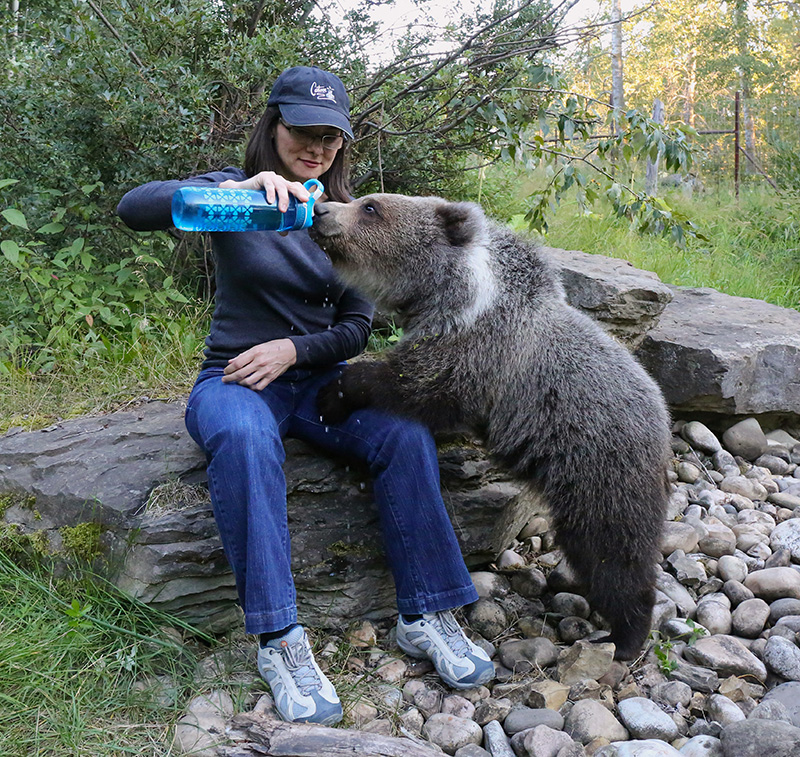 It’s a wonderful feeling that Berkley still knows me each visit and comes to say hello, no matter where she is in her large enclosure.
It’s a wonderful feeling that Berkley still knows me each visit and comes to say hello, no matter where she is in her large enclosure.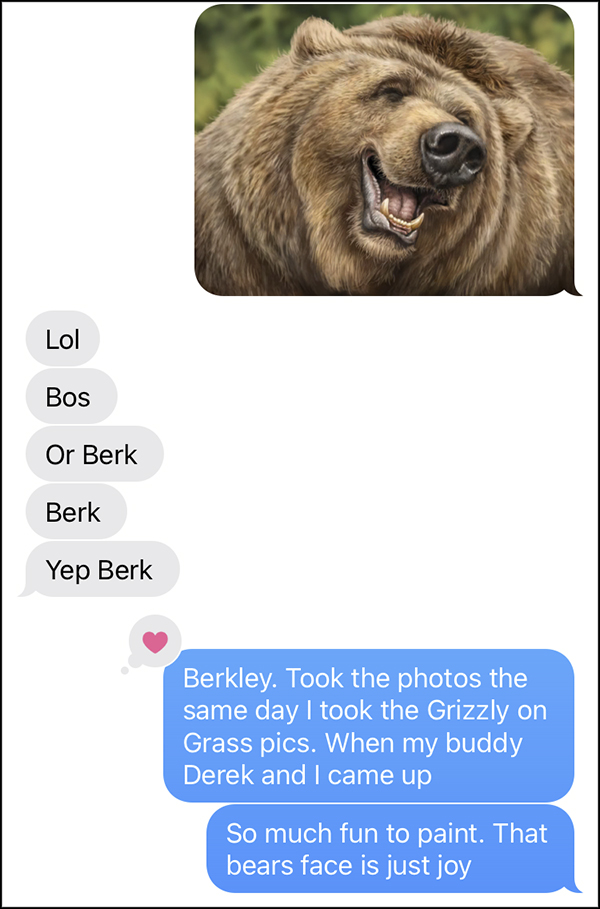
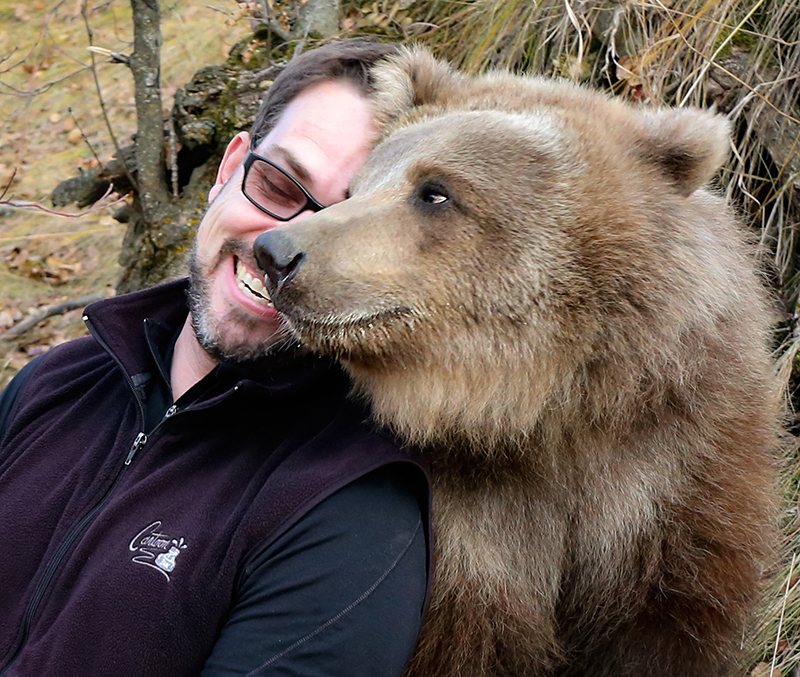

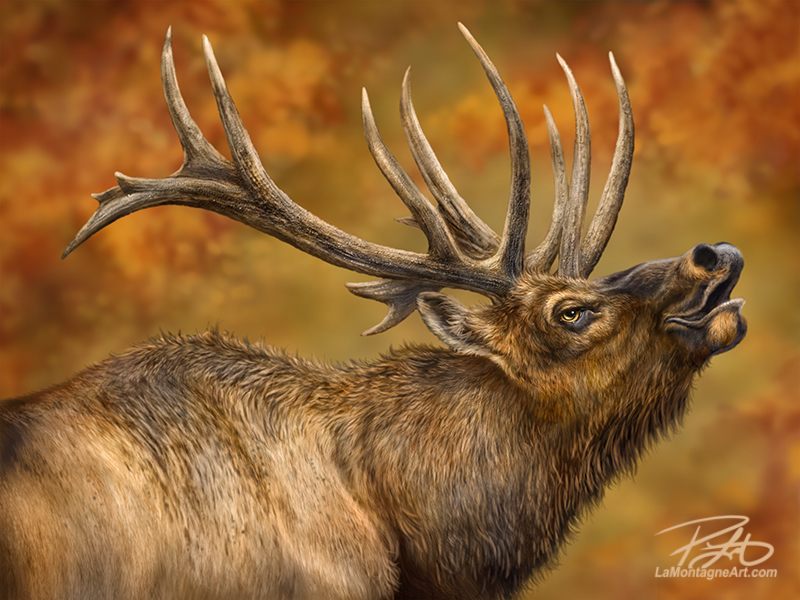 Whenever I’ve gone to Ucluelet on Vancouver Island, I’ve walked down a large staircase to the government dock to take photos of sea lions. To locals, they’re unremarkable, even a nuisance. While I’m happily snapping photos, those working on the nearby fishing boats are likely rolling their eyes at this silly tourist.
Whenever I’ve gone to Ucluelet on Vancouver Island, I’ve walked down a large staircase to the government dock to take photos of sea lions. To locals, they’re unremarkable, even a nuisance. While I’m happily snapping photos, those working on the nearby fishing boats are likely rolling their eyes at this silly tourist.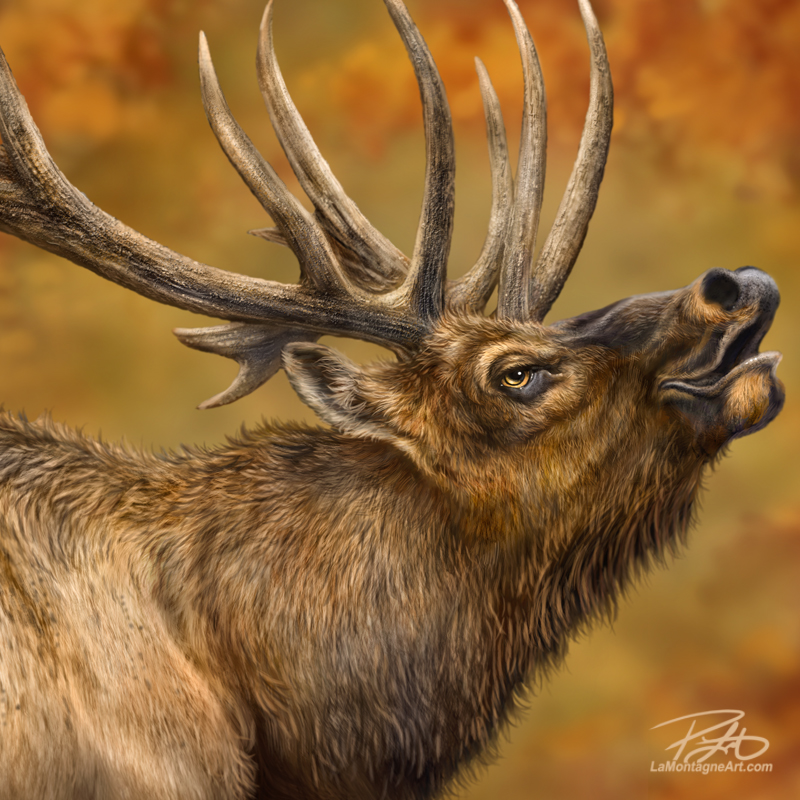

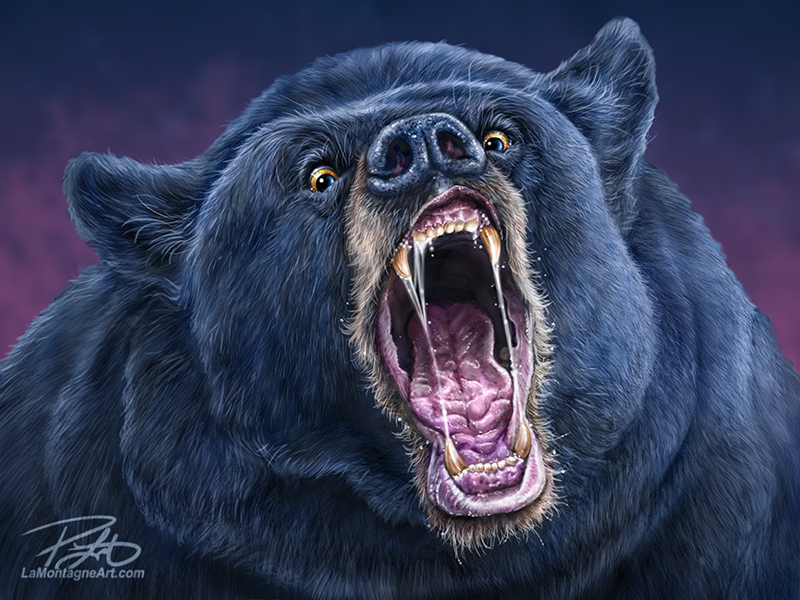 When you find work that resonates with people, any deviation is a risk. People like the happy animals, so why upset the apple cart? Shouldn’t I create another image with a better chance of print sales and licensed images?
When you find work that resonates with people, any deviation is a risk. People like the happy animals, so why upset the apple cart? Shouldn’t I create another image with a better chance of print sales and licensed images?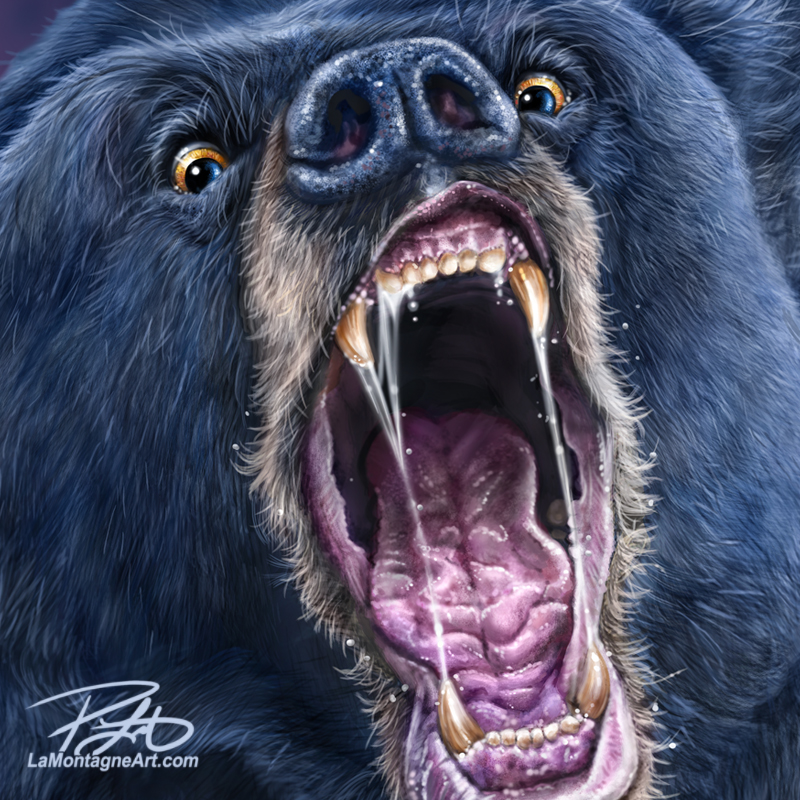 Roll your eyes, shake your head, wave it off, and call me crazy. I don’t need to convince you. All I know is I went from near-crippling back pain for several months to having almost none over a decade later. You’d think a genuine bulging disc, spinal defect, or structural deformity would worsen with age, not disappear.
Roll your eyes, shake your head, wave it off, and call me crazy. I don’t need to convince you. All I know is I went from near-crippling back pain for several months to having almost none over a decade later. You’d think a genuine bulging disc, spinal defect, or structural deformity would worsen with age, not disappear.
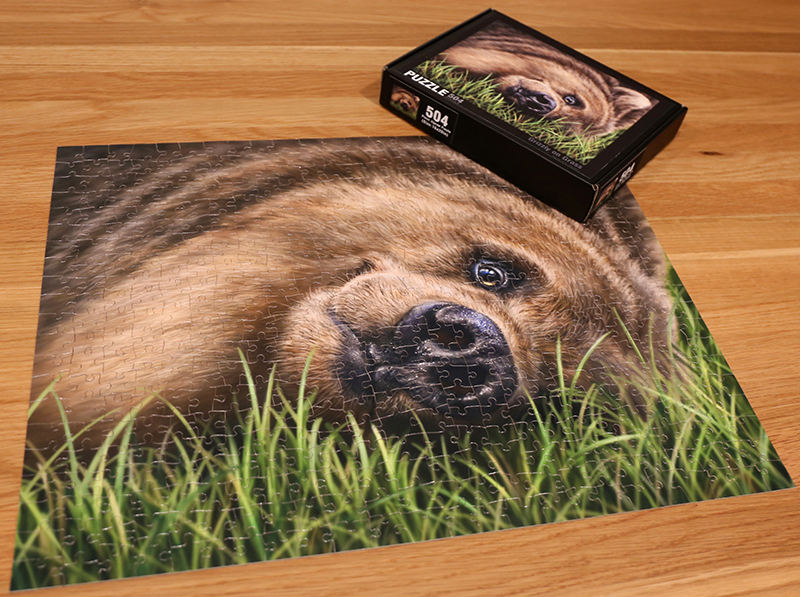 A couple of years ago, through an art licensing agency,
A couple of years ago, through an art licensing agency, 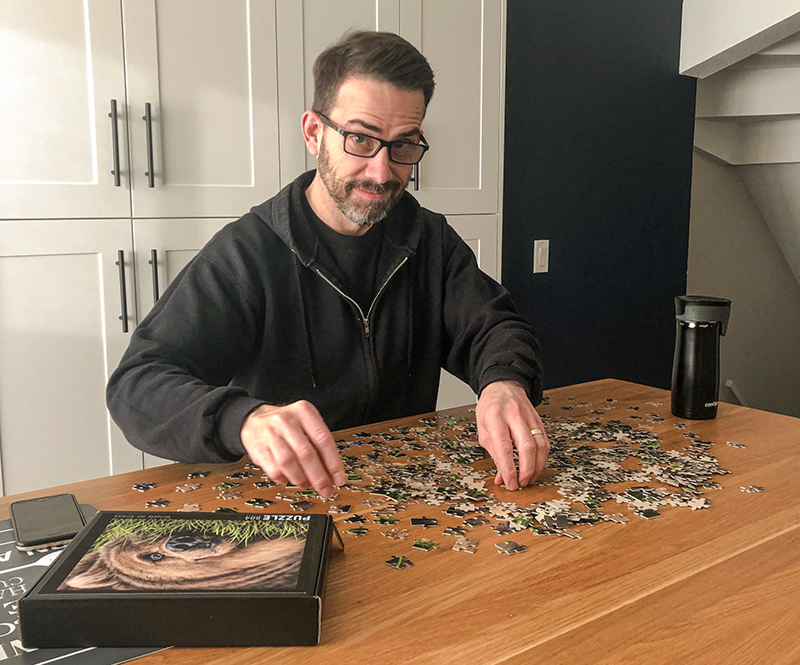 We laughed at our own arrogance, thinking this would be an afternoon diversion for a few hours. Instead, it took us several hours each day for three days to assemble it. Neither of us remembers the last time we put a puzzle together, so it’s unlikely we’ve done one as adults.
We laughed at our own arrogance, thinking this would be an afternoon diversion for a few hours. Instead, it took us several hours each day for three days to assemble it. Neither of us remembers the last time we put a puzzle together, so it’s unlikely we’ve done one as adults.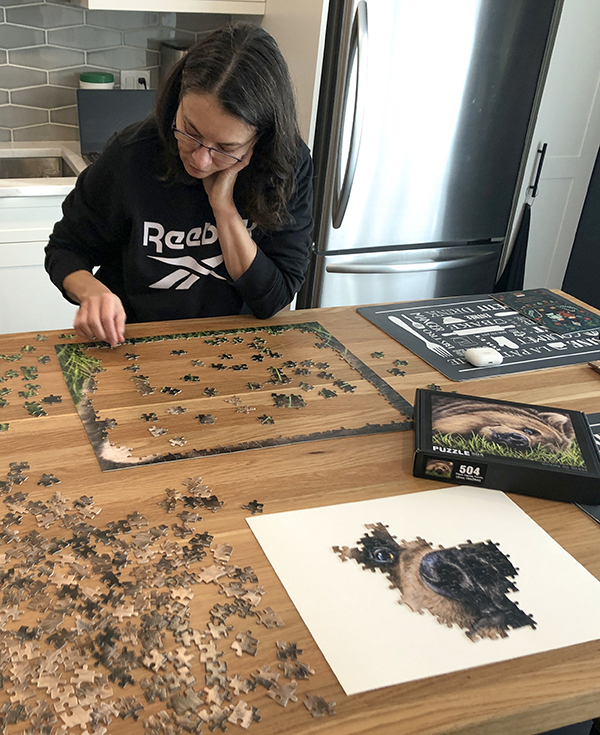 It became an obsession for both of us. After dinner last Thursday night, I asked Shonna what she wanted to watch on TV. She said she’d much rather work on the puzzle, and I agreed. I was pleased with the whole experience, though we were disappointed when it was over. We did, however, learn a valuable lesson on this one. Don’t assemble a puzzle with a lot of brown and beige texture on a surface with a lot of brown and beige texture. Newbie mistake.
It became an obsession for both of us. After dinner last Thursday night, I asked Shonna what she wanted to watch on TV. She said she’d much rather work on the puzzle, and I agreed. I was pleased with the whole experience, though we were disappointed when it was over. We did, however, learn a valuable lesson on this one. Don’t assemble a puzzle with a lot of brown and beige texture on a surface with a lot of brown and beige texture. Newbie mistake.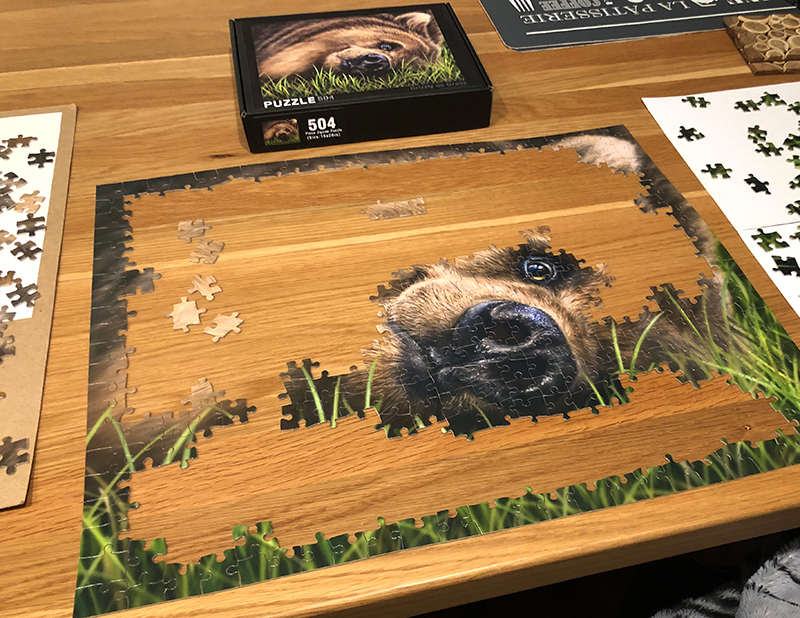 This puzzle is 16″ X20″ with 504 pieces, which will be the dimensions and count for the first orders. For casual puzzlers like us, it’s the perfect size and difficulty. However, it wasn’t too easy, and we could get it done and still enjoy it.
This puzzle is 16″ X20″ with 504 pieces, which will be the dimensions and count for the first orders. For casual puzzlers like us, it’s the perfect size and difficulty. However, it wasn’t too easy, and we could get it done and still enjoy it.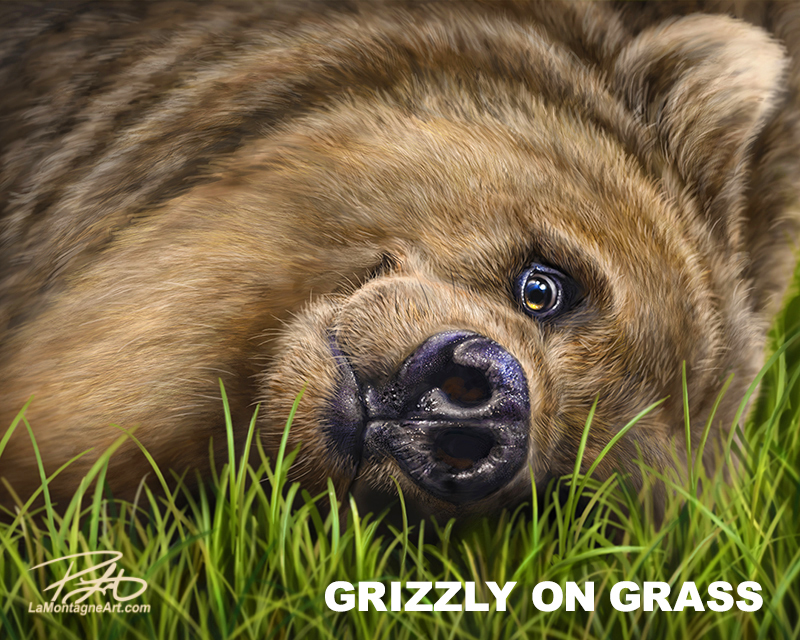
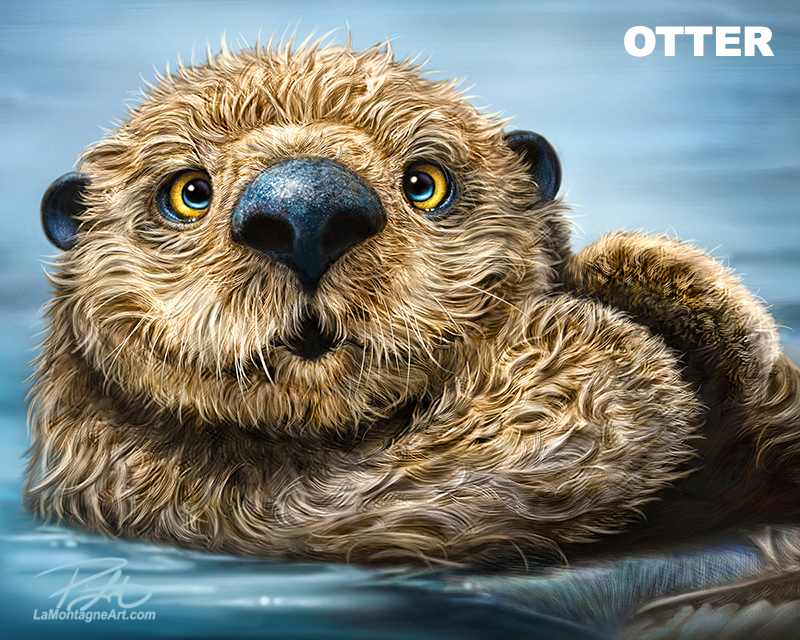
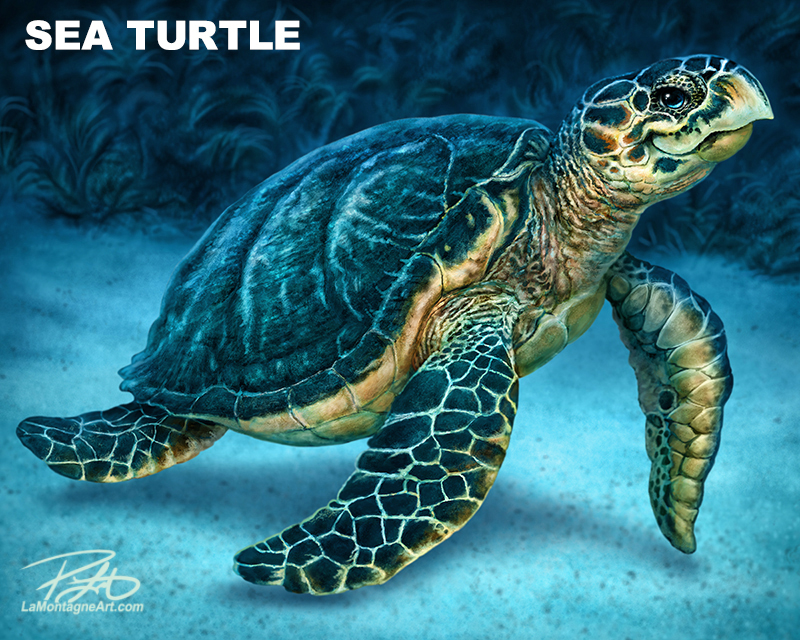
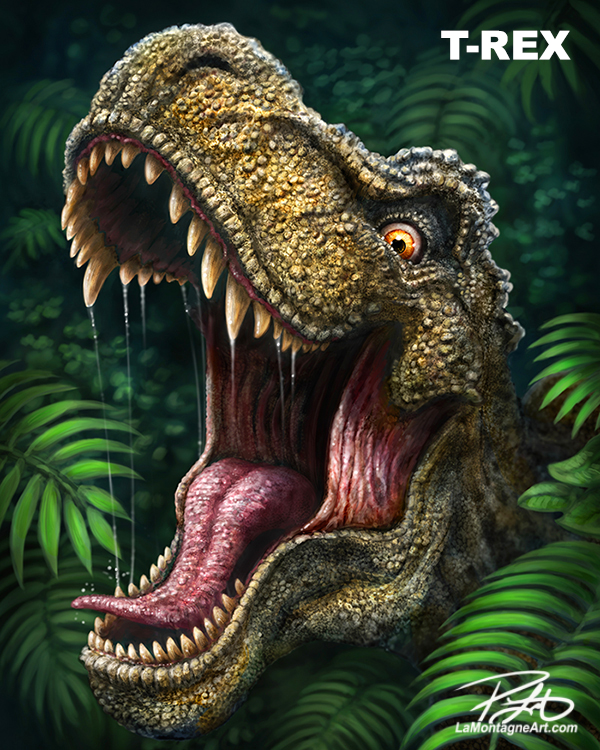 I’m also considering these cropped versions of the Flamingo, Parrot, Squirrel, Ring-tailed Lemur, and Snow Day.
I’m also considering these cropped versions of the Flamingo, Parrot, Squirrel, Ring-tailed Lemur, and Snow Day.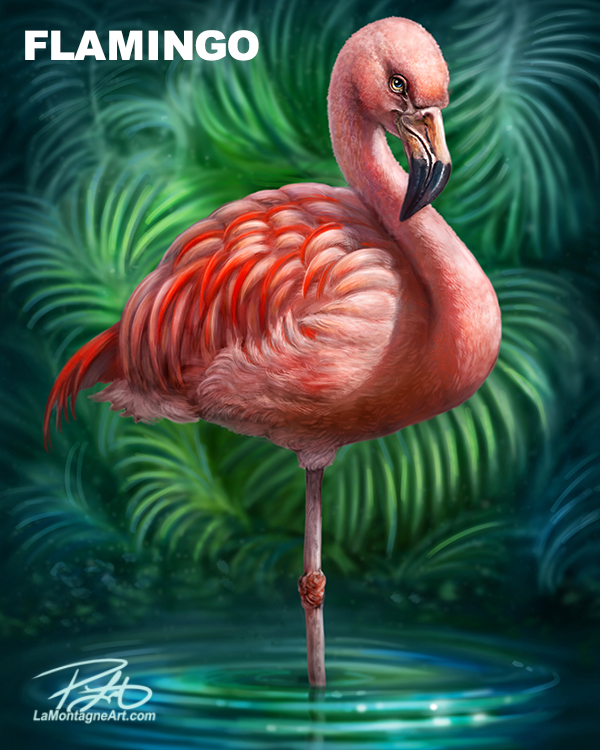
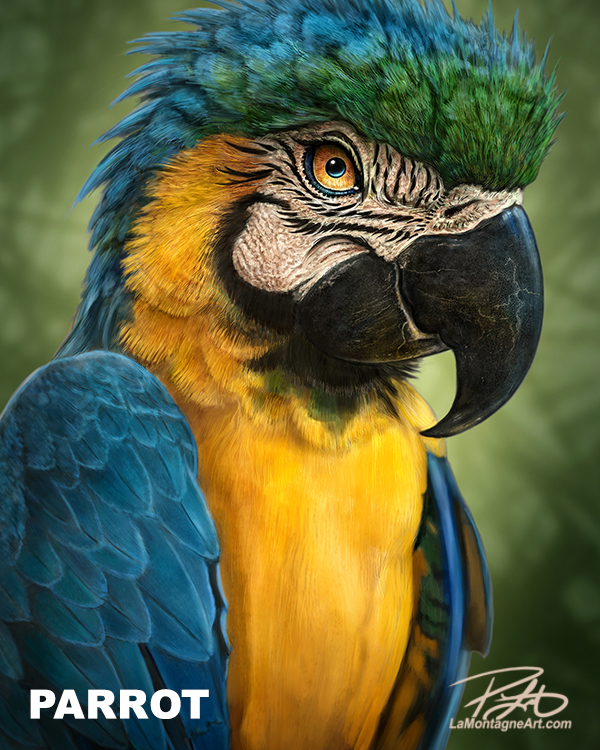
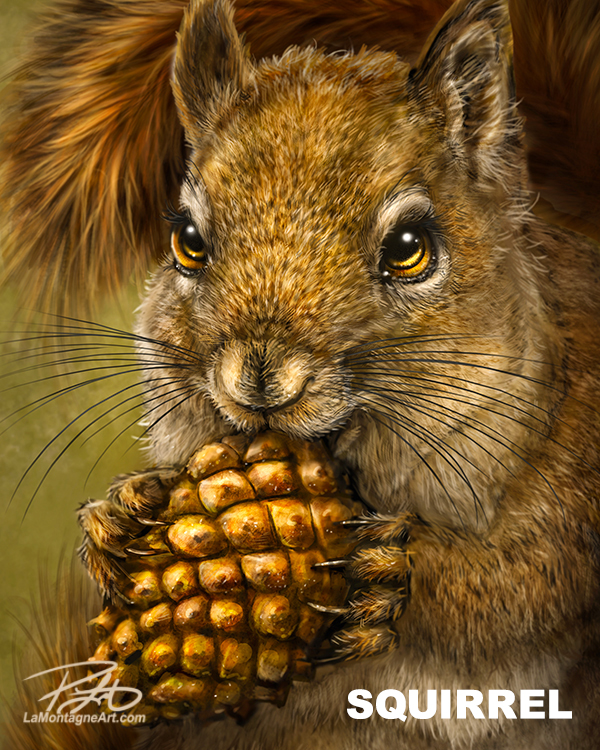
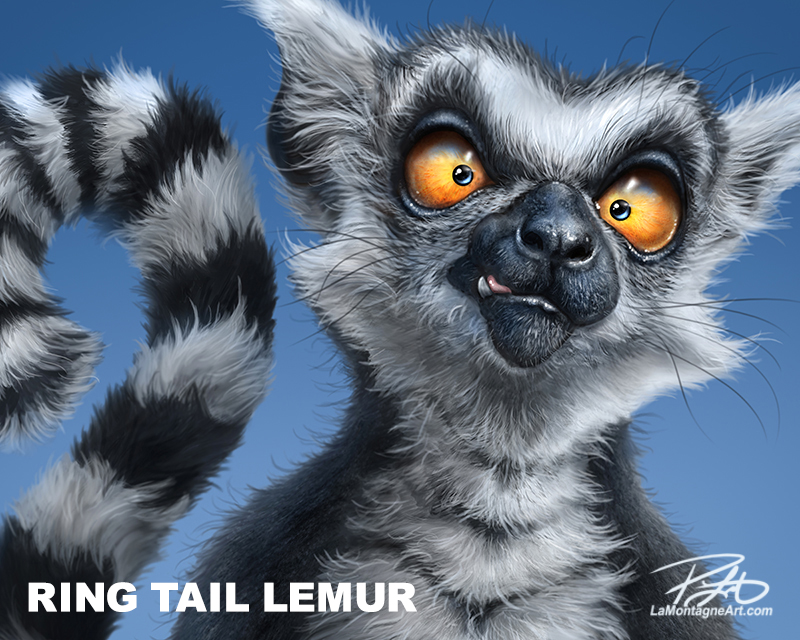
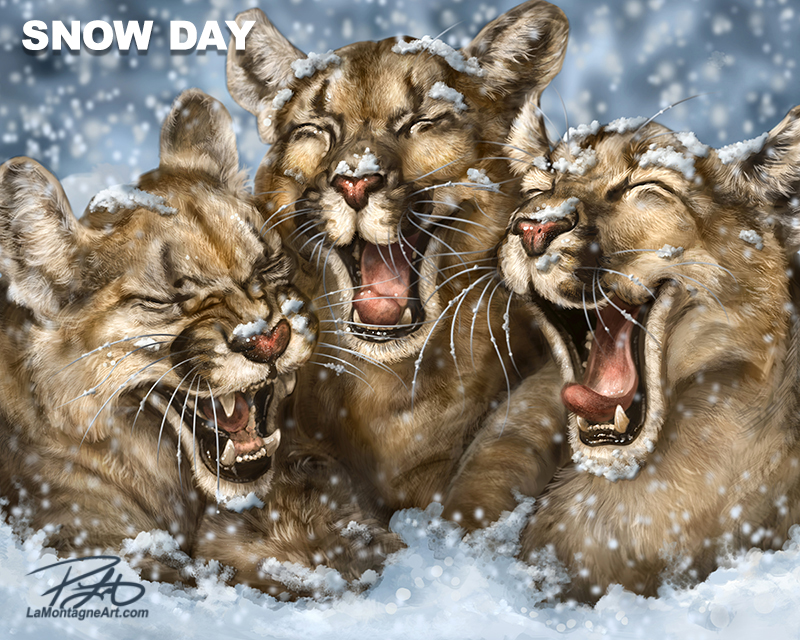 But I’d love to hear your opinion.
But I’d love to hear your opinion.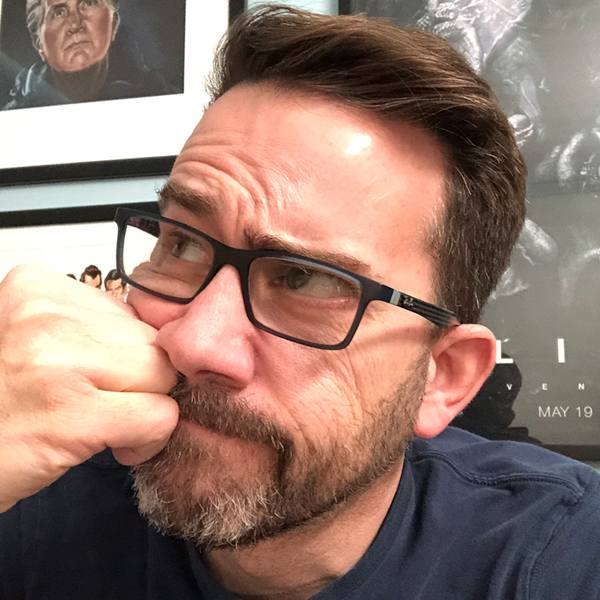
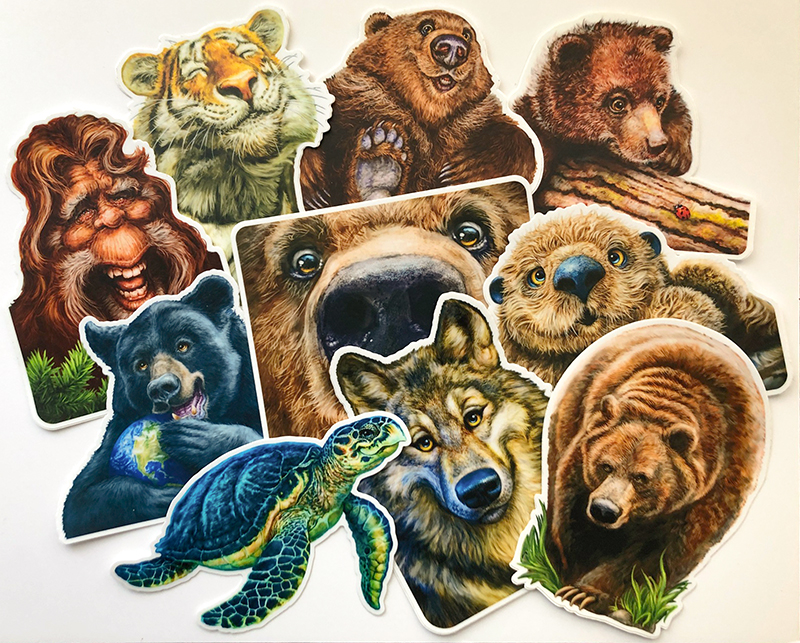
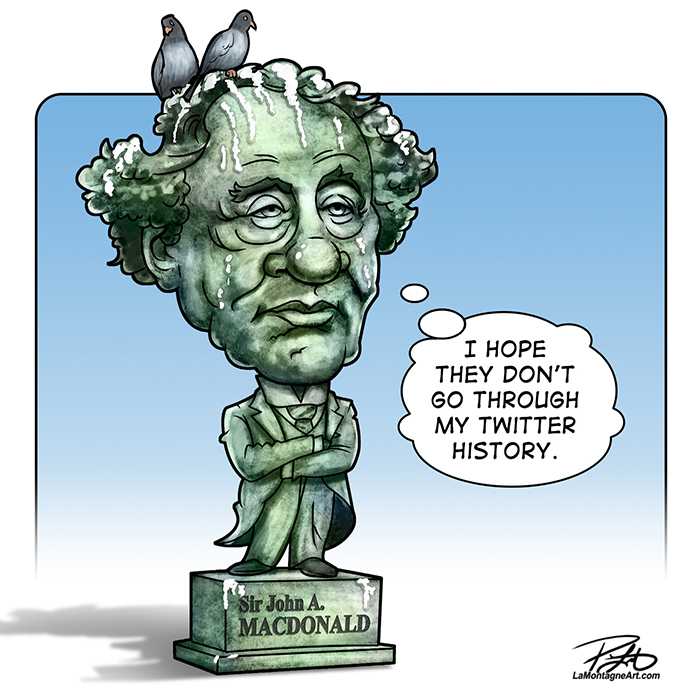
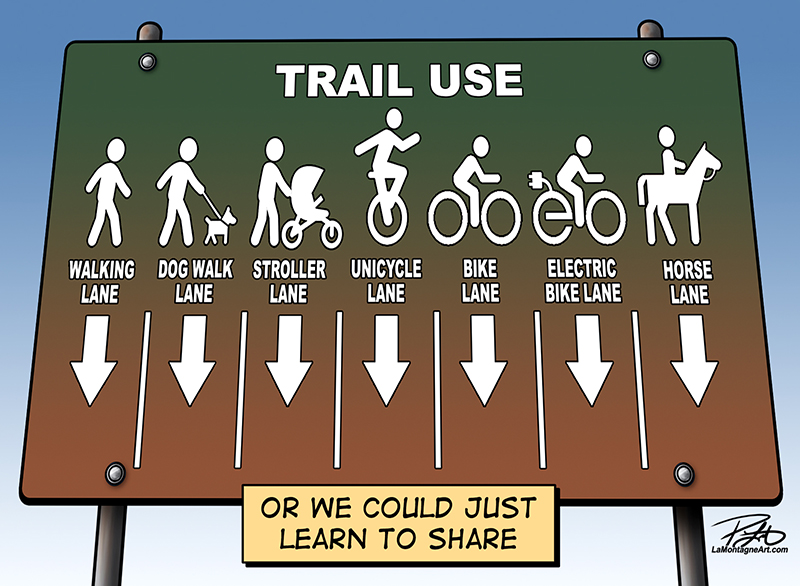

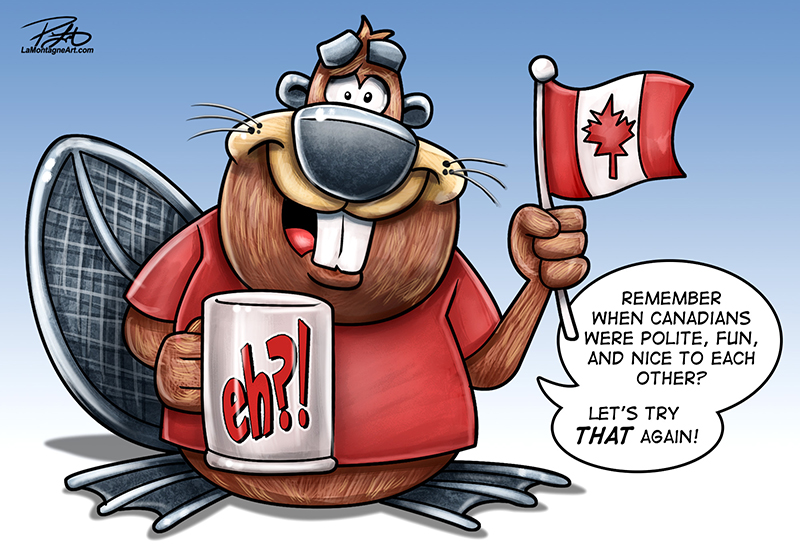
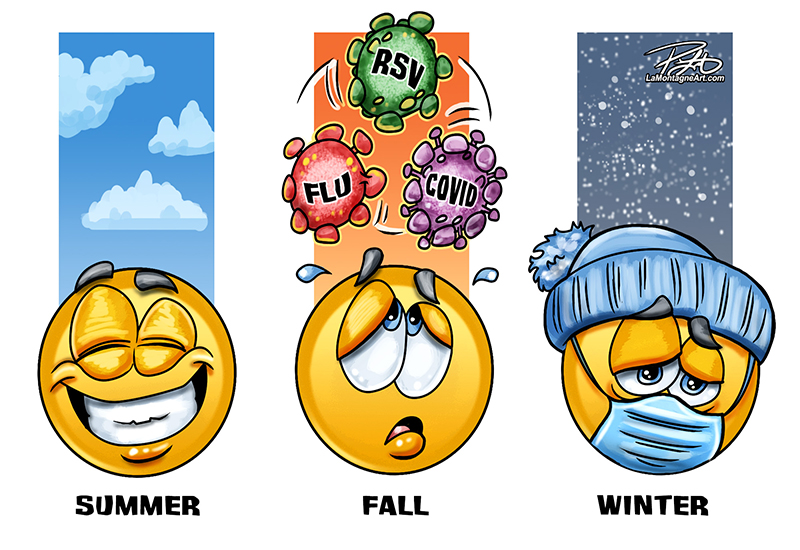

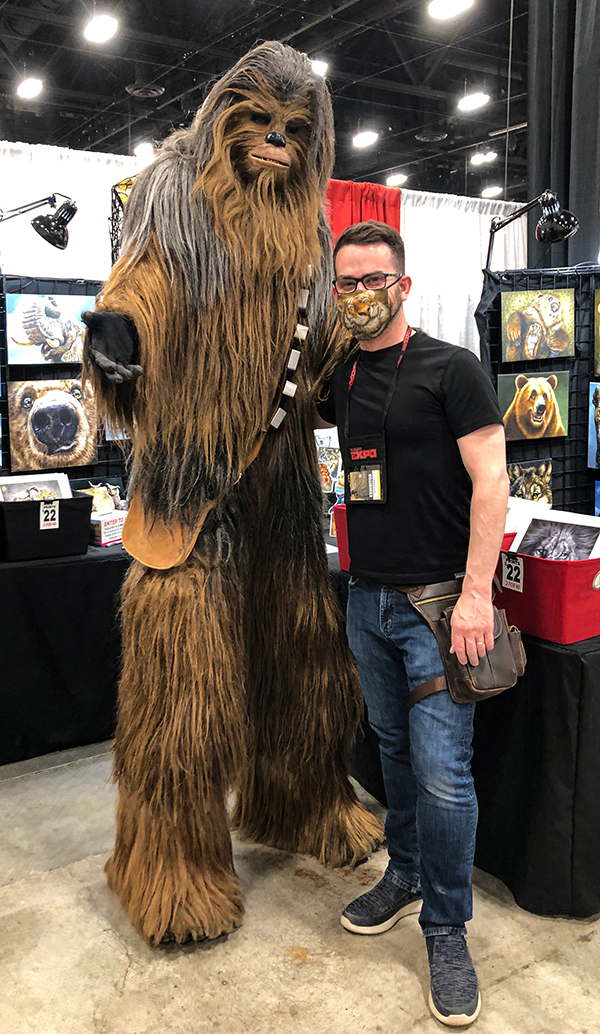
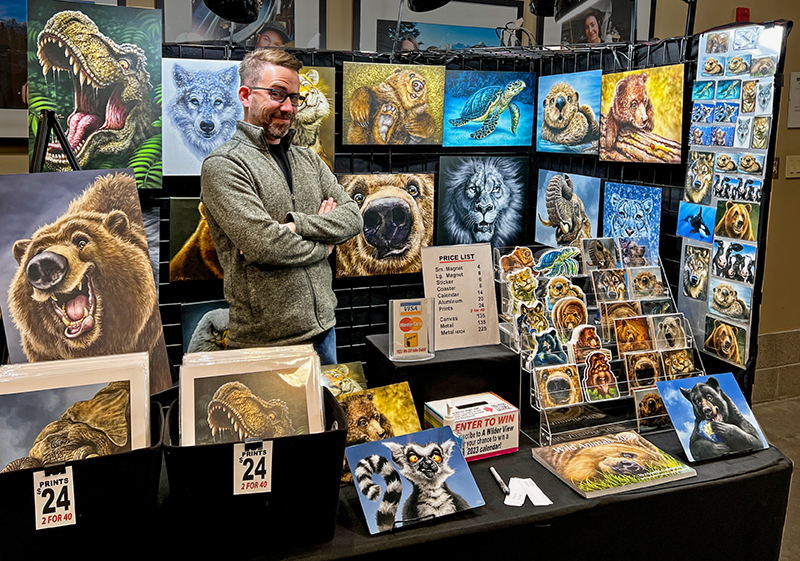 There were several Mountain Made Markets this year, with weekend events every month from May to December. Held indoors at the Canmore Civic Centre, it’s an easy setup close to home, so it’s worth my time.
There were several Mountain Made Markets this year, with weekend events every month from May to December. Held indoors at the Canmore Civic Centre, it’s an easy setup close to home, so it’s worth my time.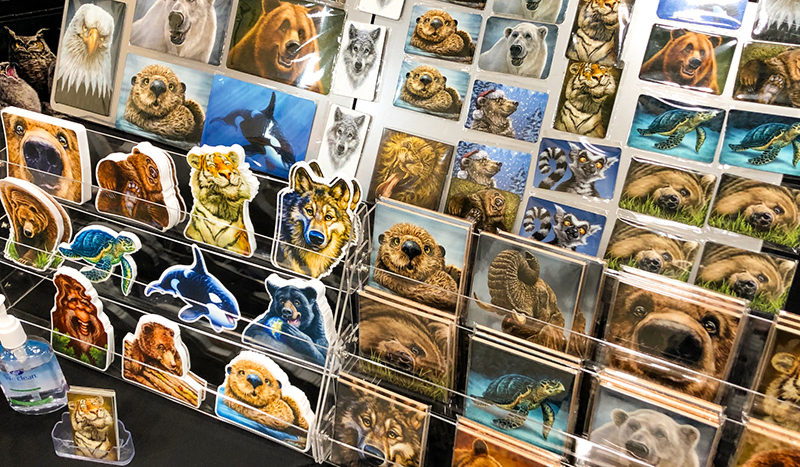 Licensing allows me to spend my time painting and still reach new markets and audiences. I signed a few new deals this year with
Licensing allows me to spend my time painting and still reach new markets and audiences. I signed a few new deals this year with 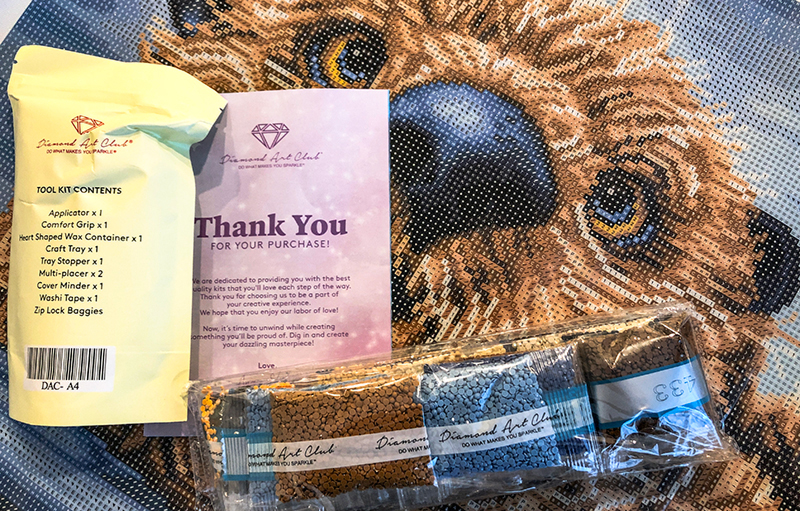
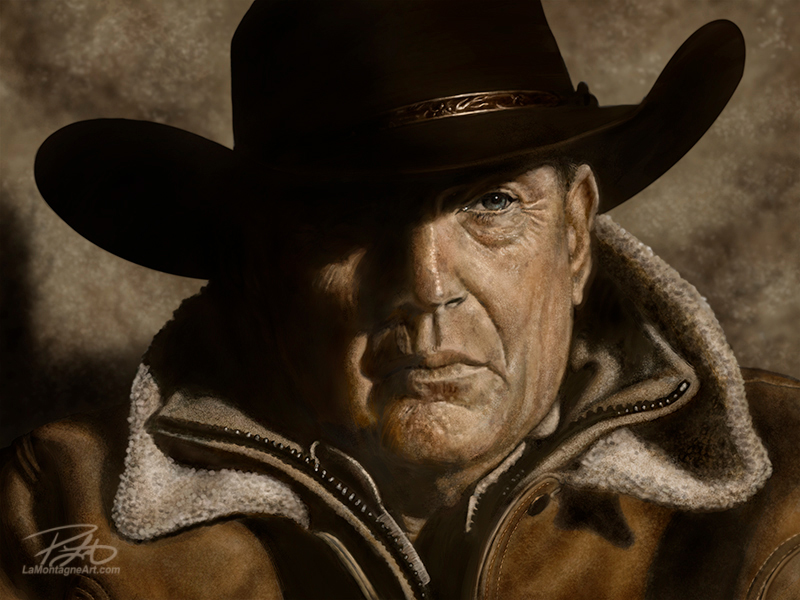
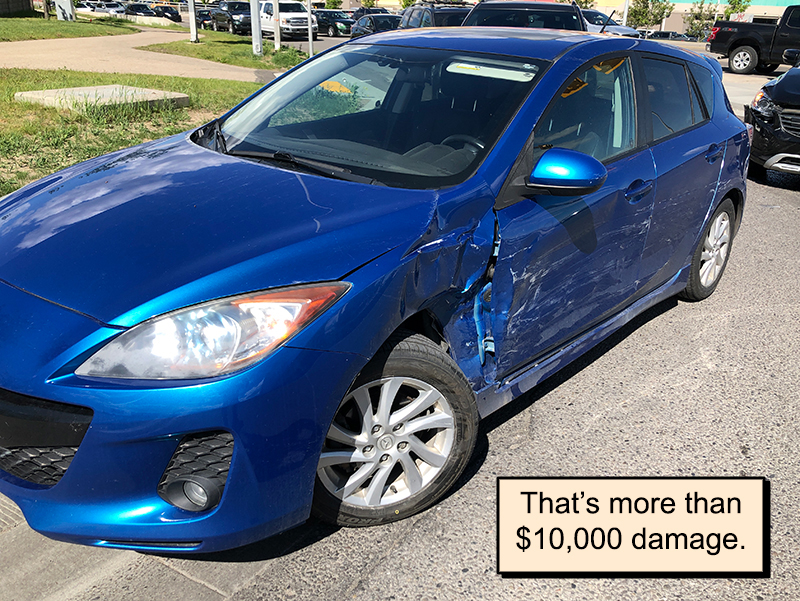
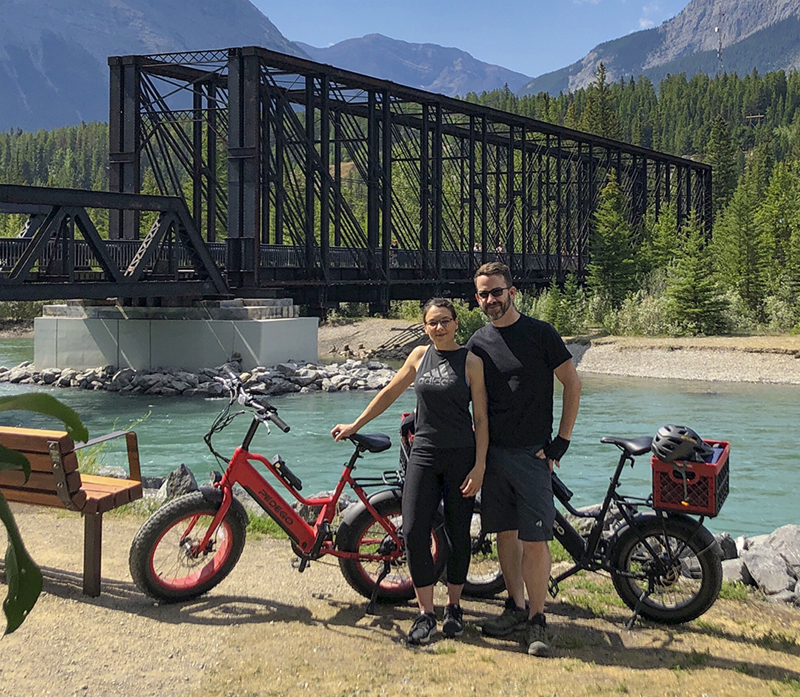
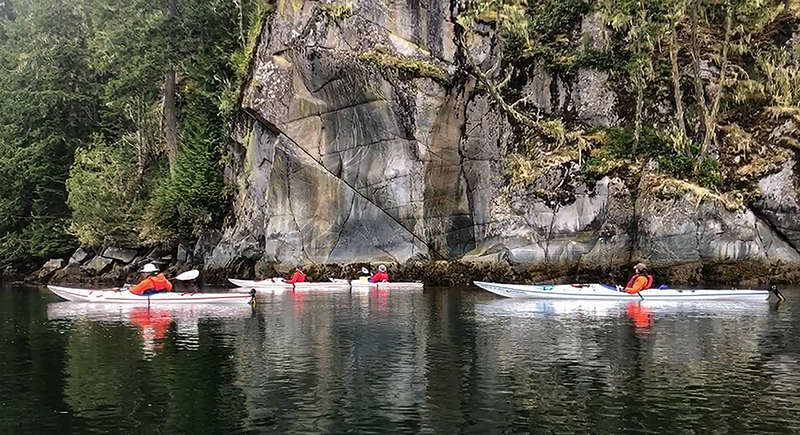
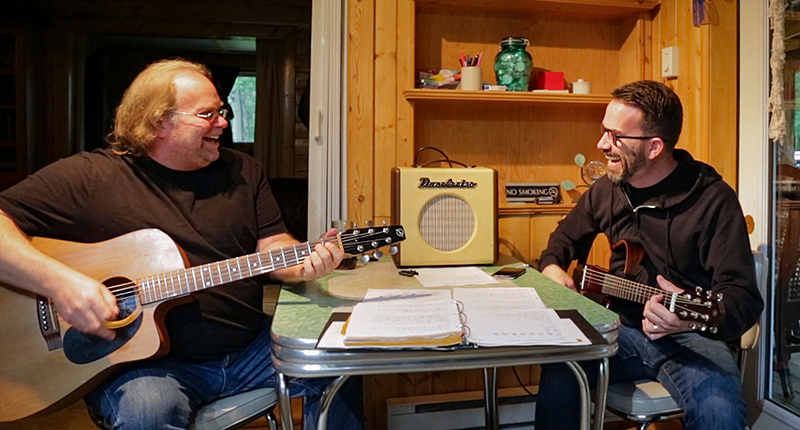
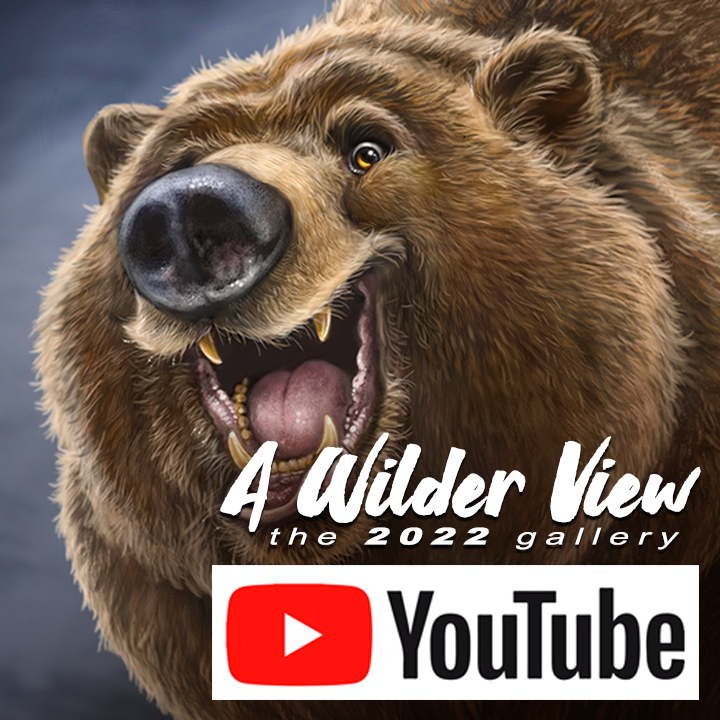

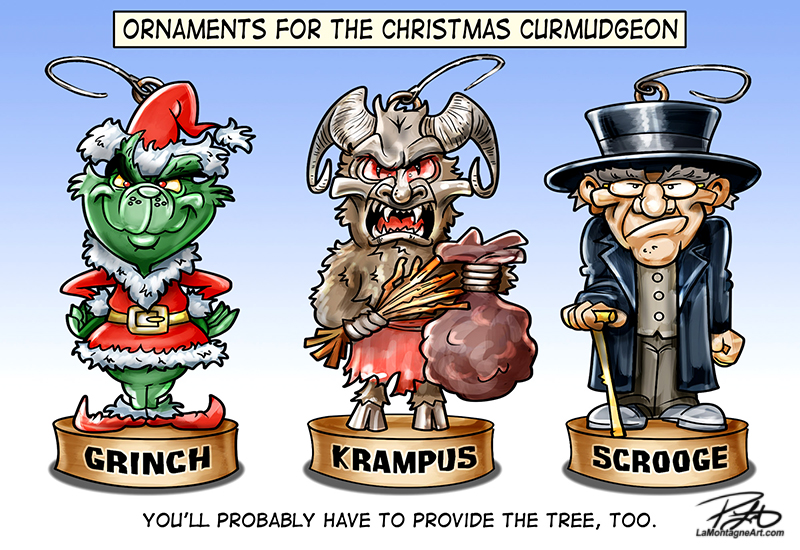 Near as I can tell, it was the seven years working in the tourism industry in Banff that exorcised the spirit of Christmas from this here cartoonist and painter of whimsical wildlife.
Near as I can tell, it was the seven years working in the tourism industry in Banff that exorcised the spirit of Christmas from this here cartoonist and painter of whimsical wildlife.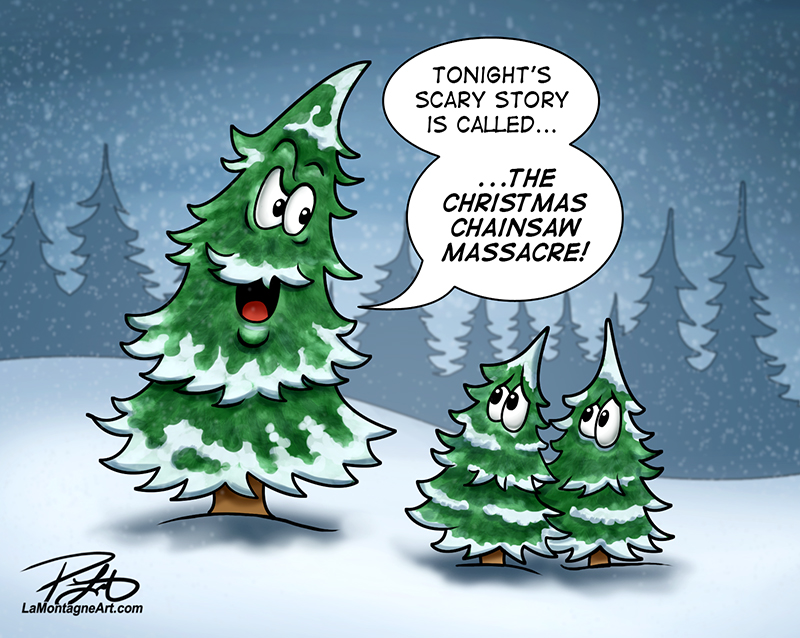 Shonna and I have not had a tree or decorations in more than twenty years. Aside from a few extra blankets on the couch, our home looks the same on December 25th as on July 25th. We don’t exchange gifts, and we don’t make a big meal.
Shonna and I have not had a tree or decorations in more than twenty years. Aside from a few extra blankets on the couch, our home looks the same on December 25th as on July 25th. We don’t exchange gifts, and we don’t make a big meal.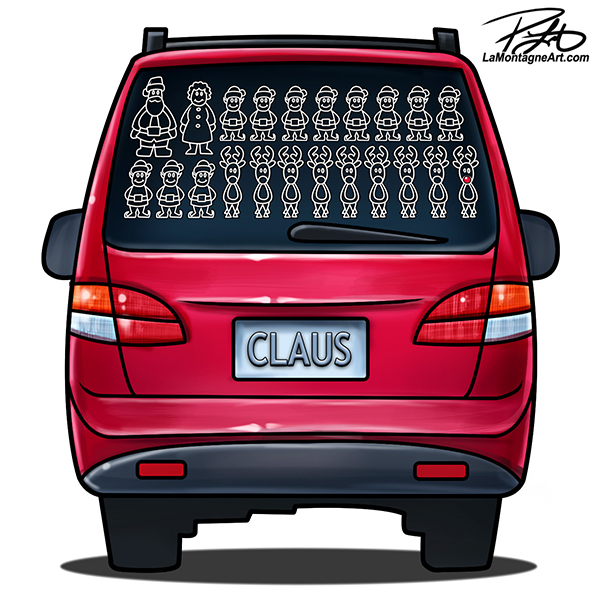 I welcomed the excuse not to travel. In the darkest month, with the best chance for the worst weather and most treacherous driving, while we’re all under peak stress, everybody hits the road at the same time. And if the highways close for a winter whiteout, and the RCMP tell you to stay home, well, that’s just too bad. Find a way; otherwise, you’ve ruined Christmas for everybody.
I welcomed the excuse not to travel. In the darkest month, with the best chance for the worst weather and most treacherous driving, while we’re all under peak stress, everybody hits the road at the same time. And if the highways close for a winter whiteout, and the RCMP tell you to stay home, well, that’s just too bad. Find a way; otherwise, you’ve ruined Christmas for everybody.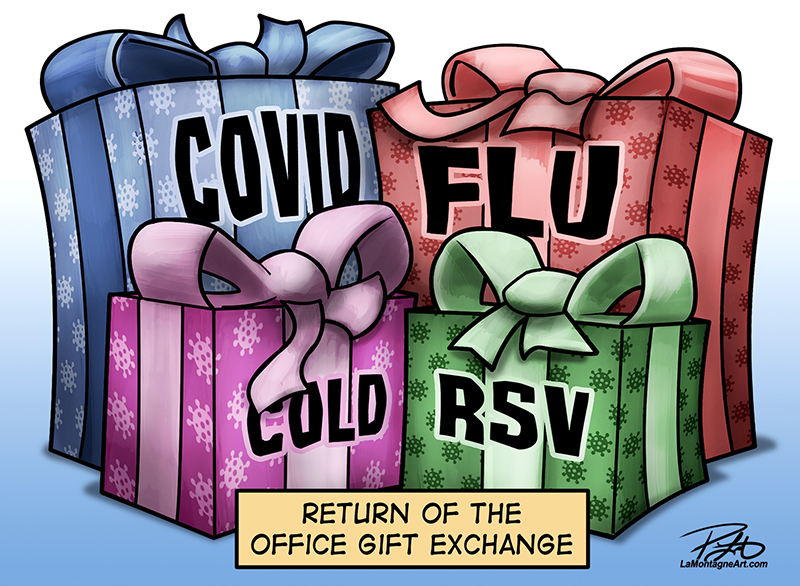 Even before the pandemic, ‘tis the season when we’re all contagious. So, we get together with as many people as possible, cram ourselves into crowded spaces, shake hands, hug and kiss and then eat a bunch of finger food.
Even before the pandemic, ‘tis the season when we’re all contagious. So, we get together with as many people as possible, cram ourselves into crowded spaces, shake hands, hug and kiss and then eat a bunch of finger food.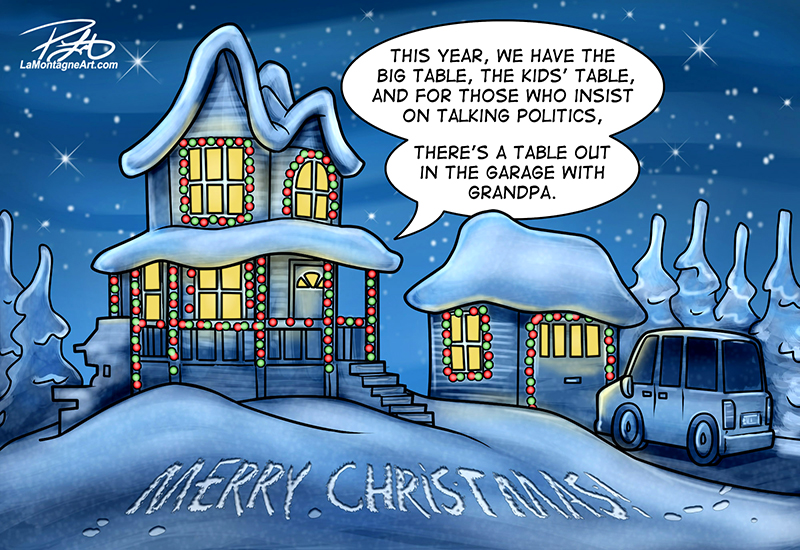 But here’s where it gets weird.
But here’s where it gets weird. True, there’s always a cynical tone to these cartoons, making fun of the season and my issues with it, but that’s a pillar of the editorial cartoonist profession all year long. I usually come up with far too many ideas this time of year, more than I can draw in December.
True, there’s always a cynical tone to these cartoons, making fun of the season and my issues with it, but that’s a pillar of the editorial cartoonist profession all year long. I usually come up with far too many ideas this time of year, more than I can draw in December.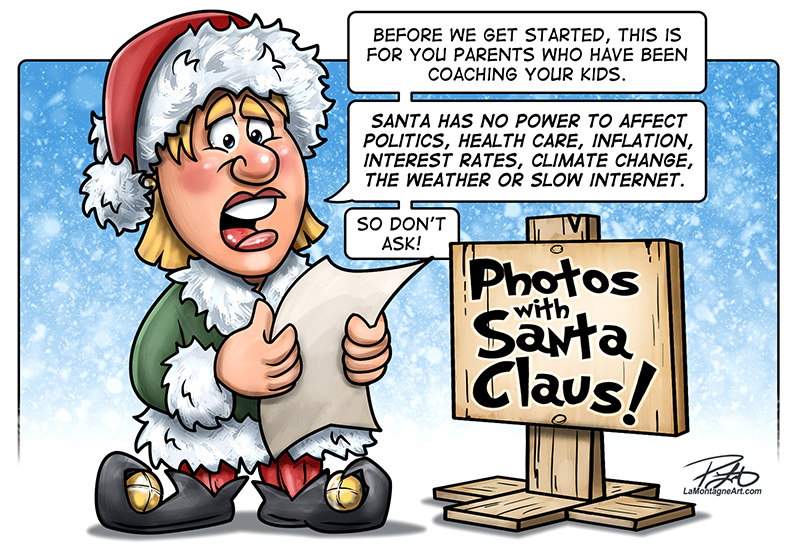
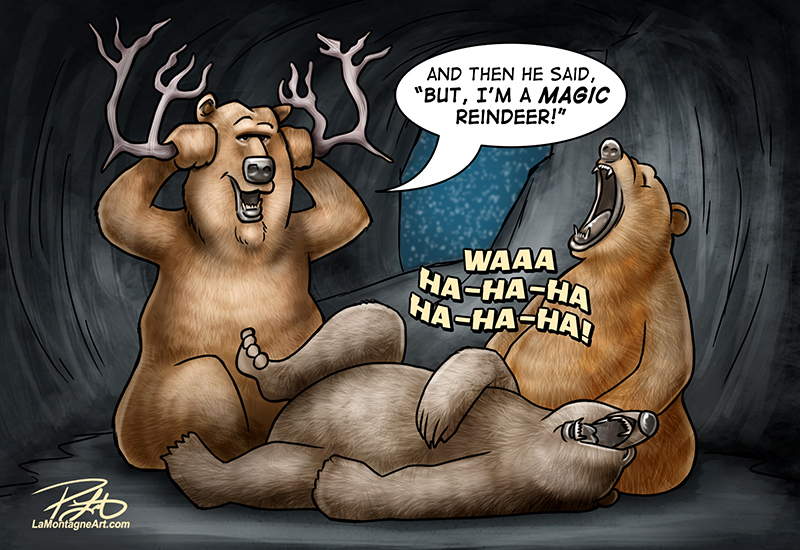


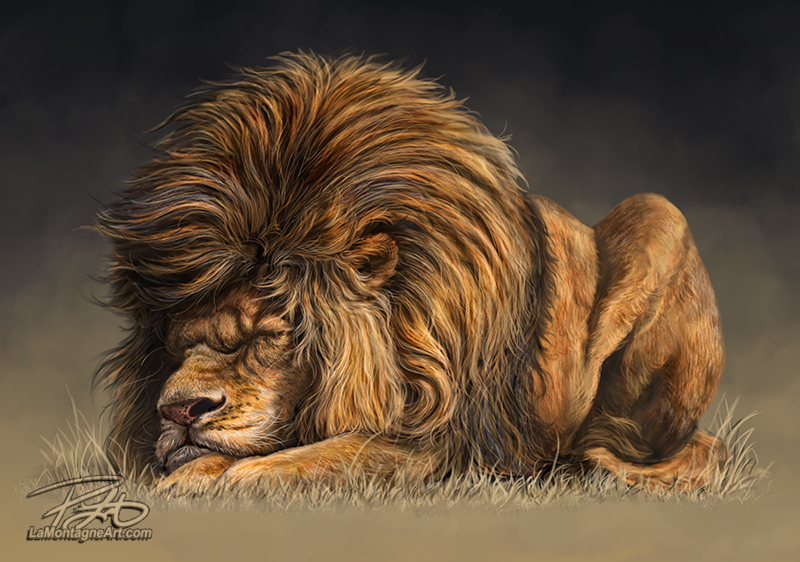 We’ve had fantastic fall weather this year in the mountains. The leaves took a long time to change, and there are still plenty on the trees. It’s been almost like summer, right up until last week, with our first snowfall. A warming climate is a growing concern, but it has been hard to see that big picture lately while still biking in shorts in the middle of October.
We’ve had fantastic fall weather this year in the mountains. The leaves took a long time to change, and there are still plenty on the trees. It’s been almost like summer, right up until last week, with our first snowfall. A warming climate is a growing concern, but it has been hard to see that big picture lately while still biking in shorts in the middle of October.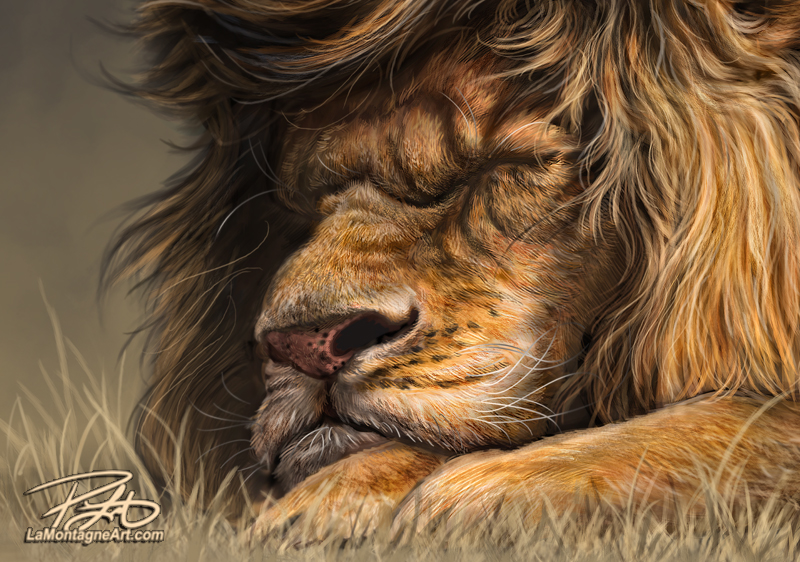 I have been working on another cute, happy painting of a grizzly bear for the past couple of months. I’m recording the process and writing a narrative to go with it. These videos take a lot more time than a regular piece. Recording the painting, writing the text, recording the voice-over, selecting the music, and editing it all add hours to the work.
I have been working on another cute, happy painting of a grizzly bear for the past couple of months. I’m recording the process and writing a narrative to go with it. These videos take a lot more time than a regular piece. Recording the painting, writing the text, recording the voice-over, selecting the music, and editing it all add hours to the work.